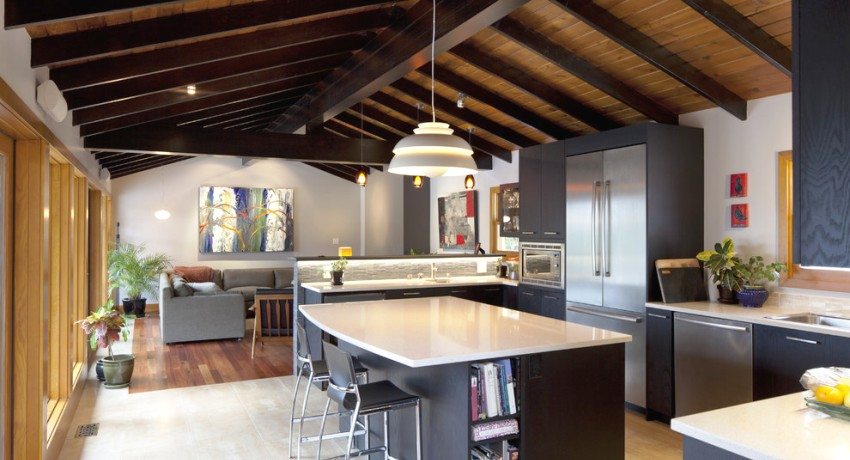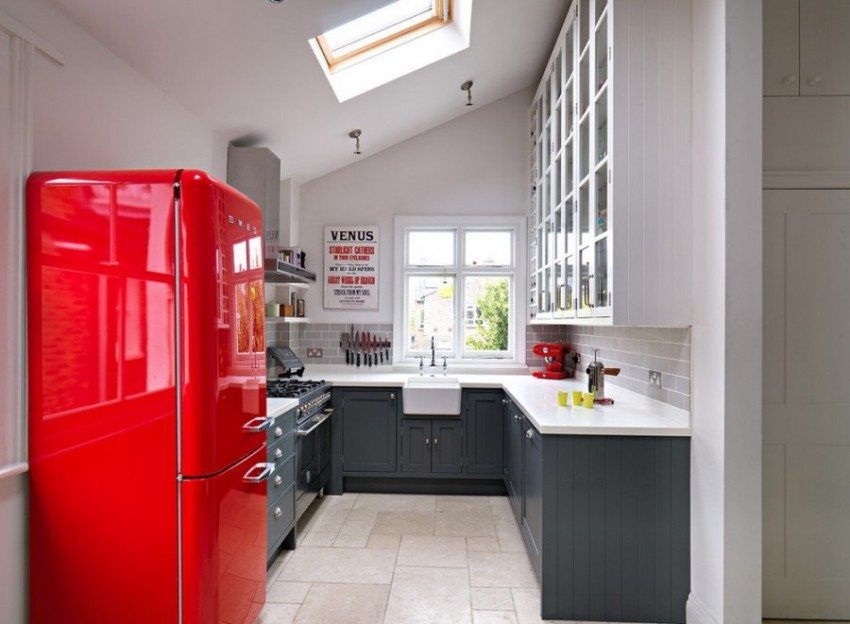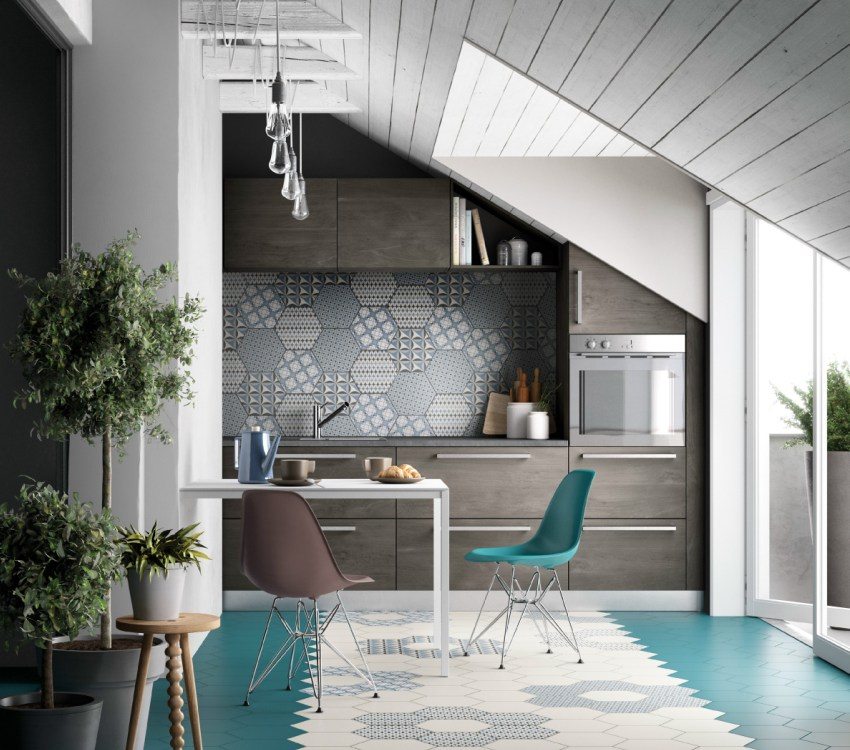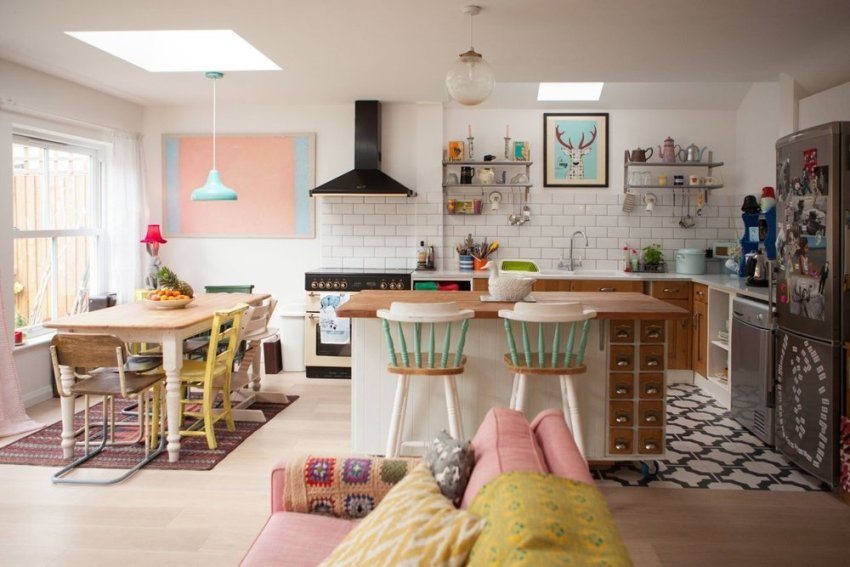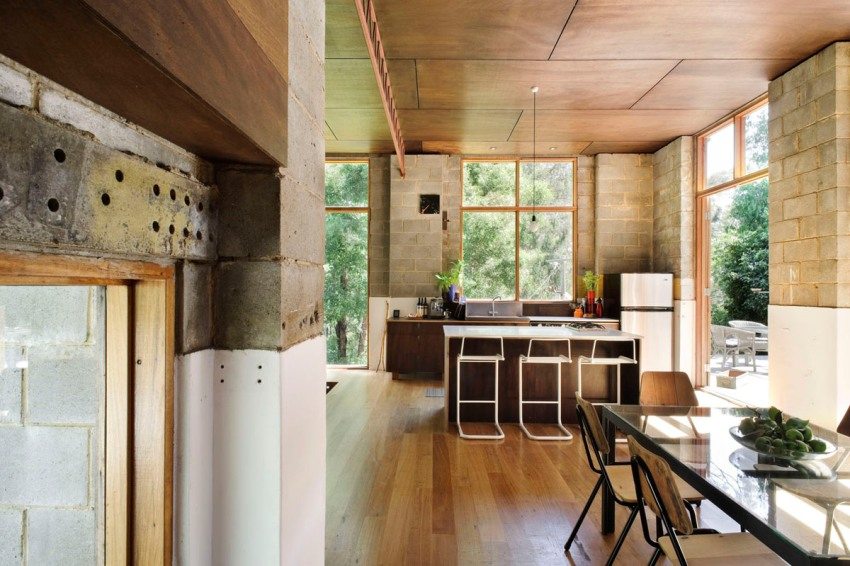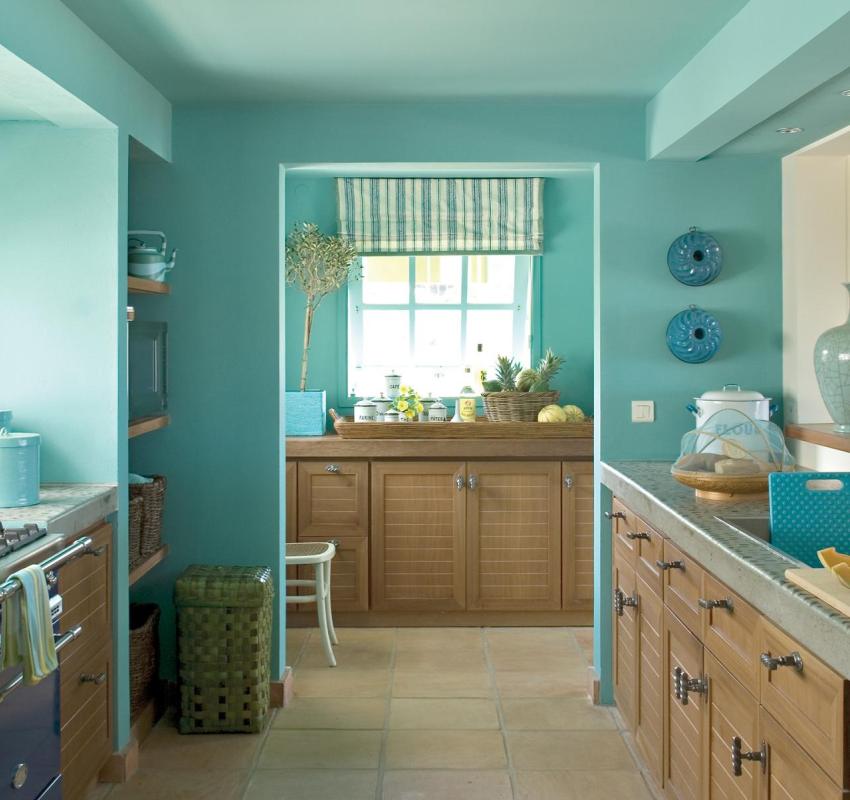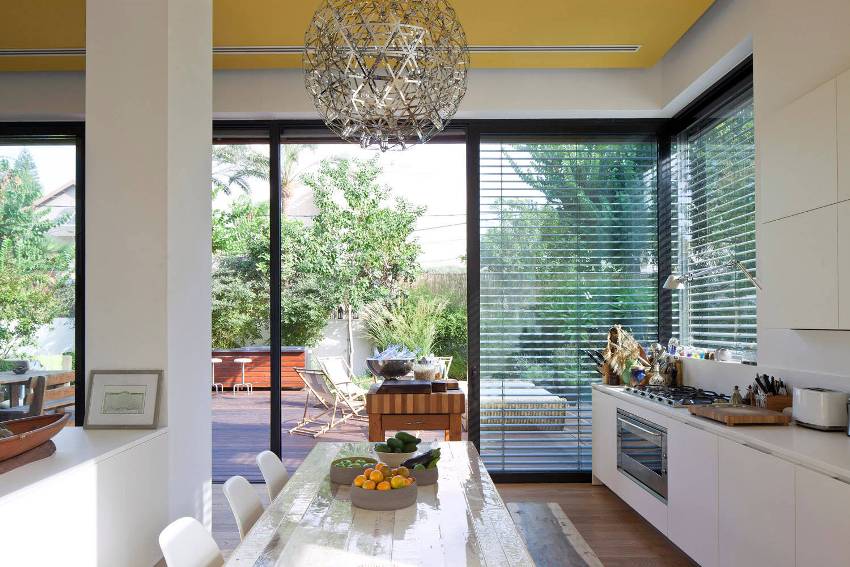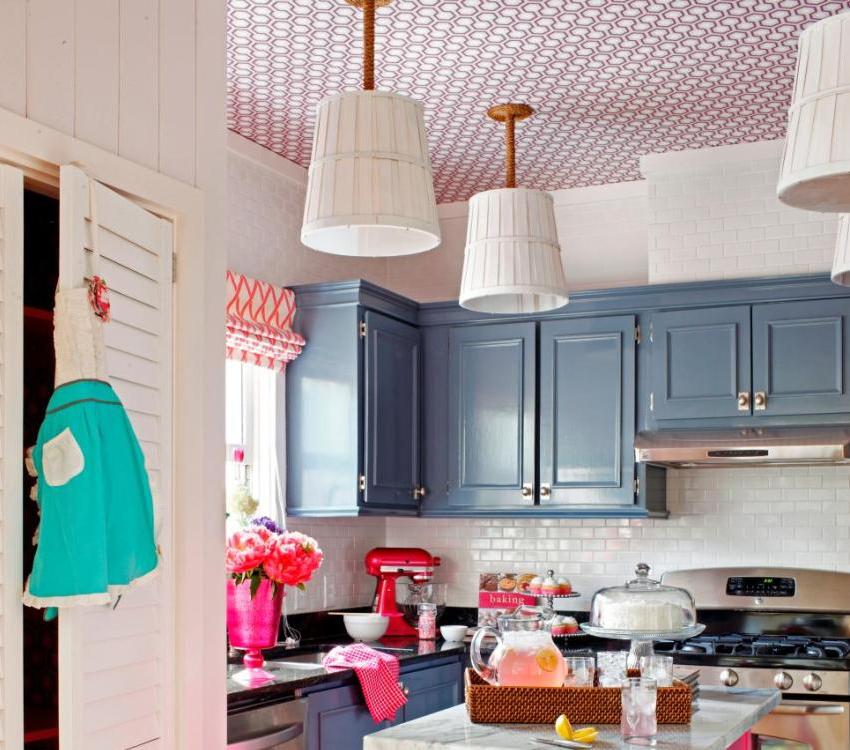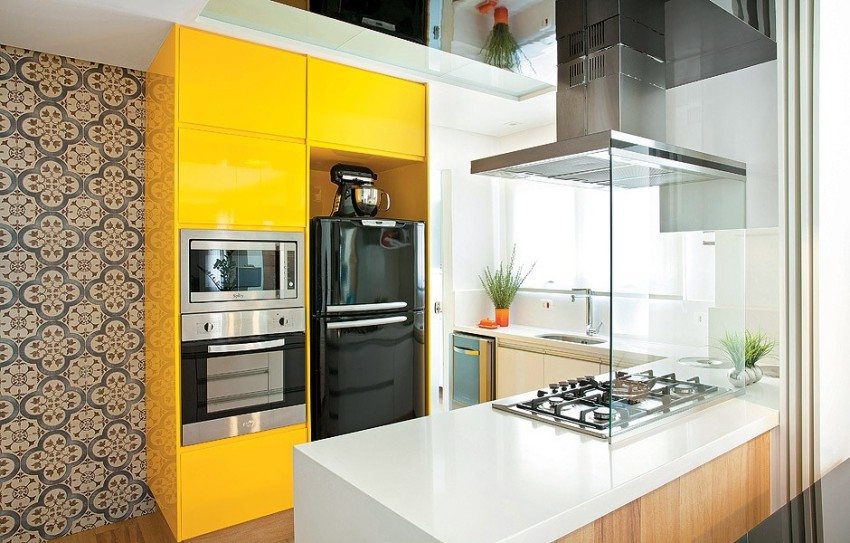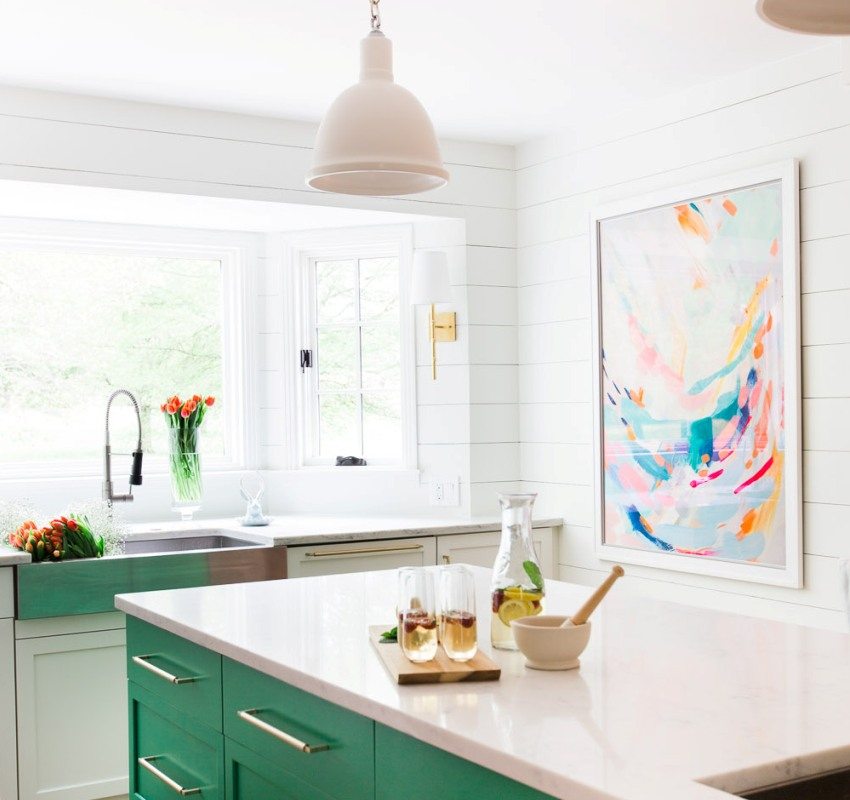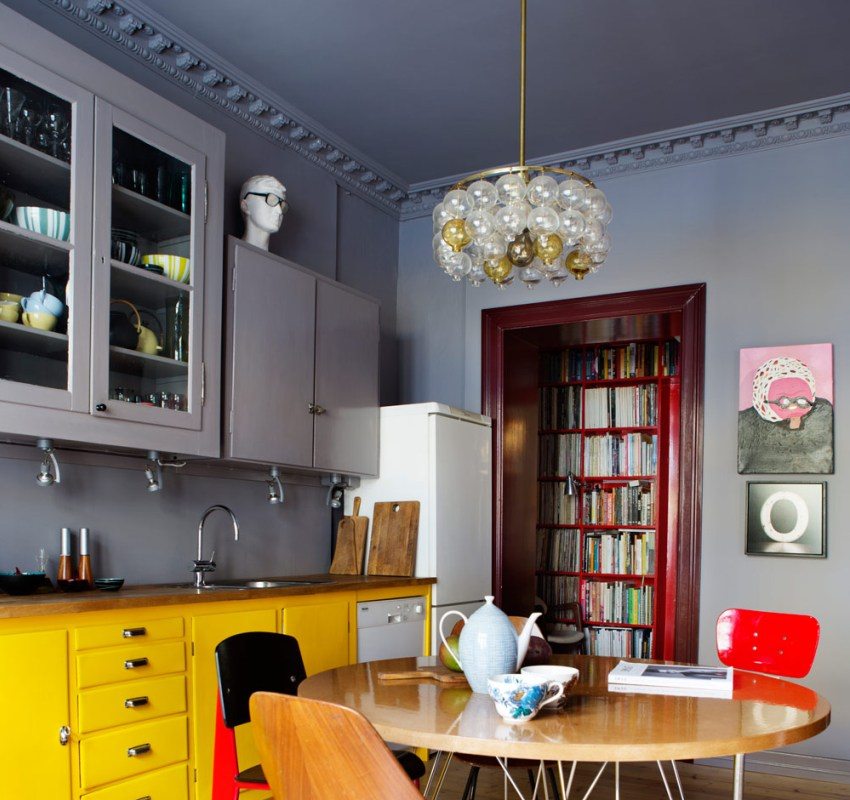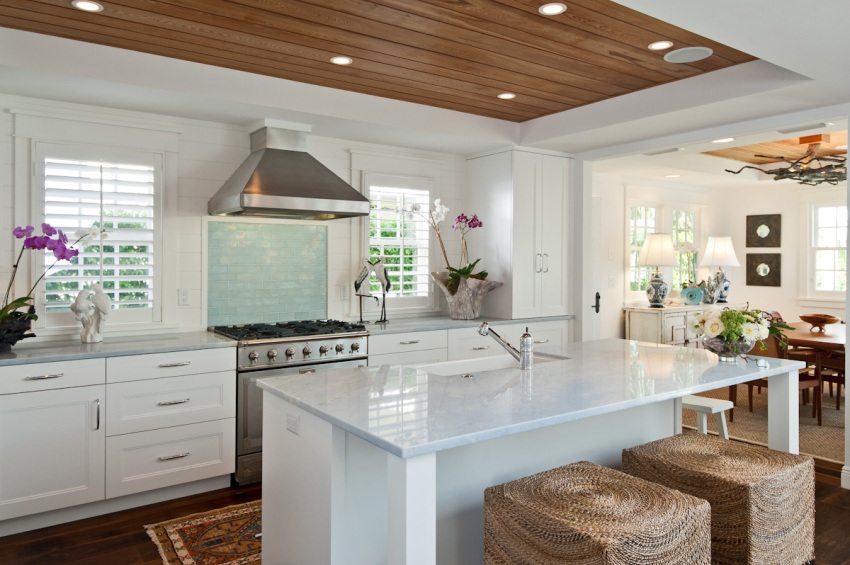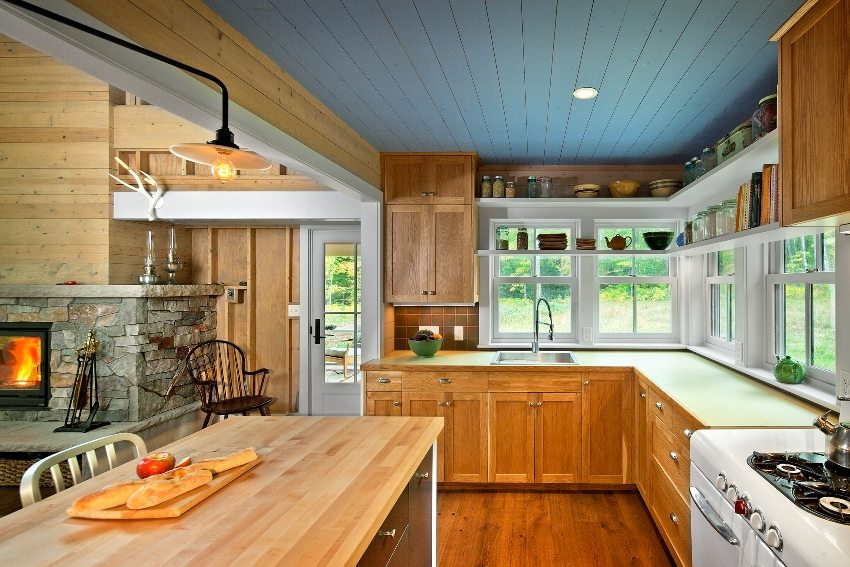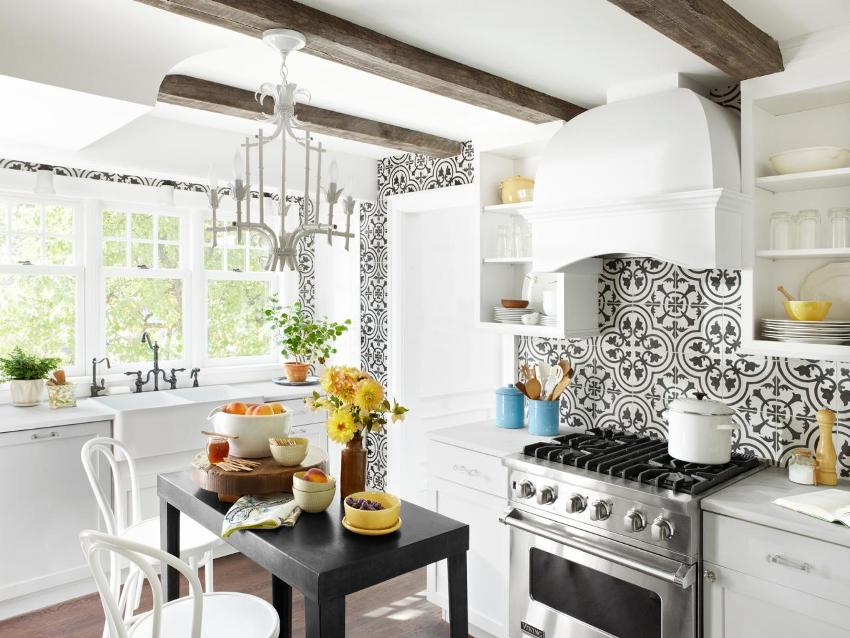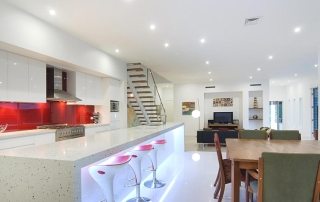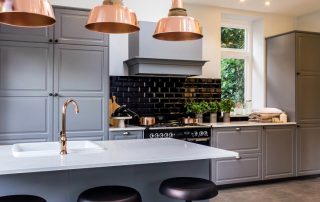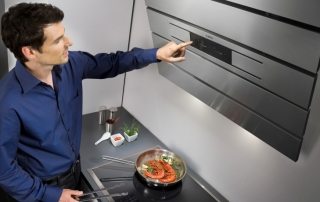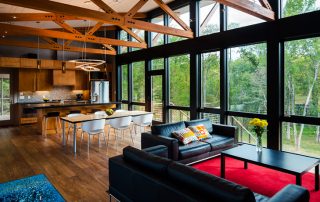Which ceiling is better in the kitchen: photo examples of design solutions for ceiling decoration will help you choose the option you like. After all, the kitchen in the house is a special place. It not only cooks different dishes, but the whole family gathers at the table. And how they love the gatherings in the kitchen, the friends who have looked "at the light". Therefore, it is so important, from the point of view of design and ease of maintenance, to choose the right ceiling design in the kitchen, forming a single, cozy and unique style.
Content [Hide]
How to make a ceiling in the kitchen: selection criteria
What is the best way to make the ceiling in the kitchen? Among the unimaginable assortment of materials offered for ceiling decoration, it is sometimes difficult to make your choice. But, most importantly, the ceiling in the kitchen must meet the requirements for the room itself: the material must be moisture resistant, durable and practical. Let's try to highlight the advantages and disadvantages of various designs of modern coatings.
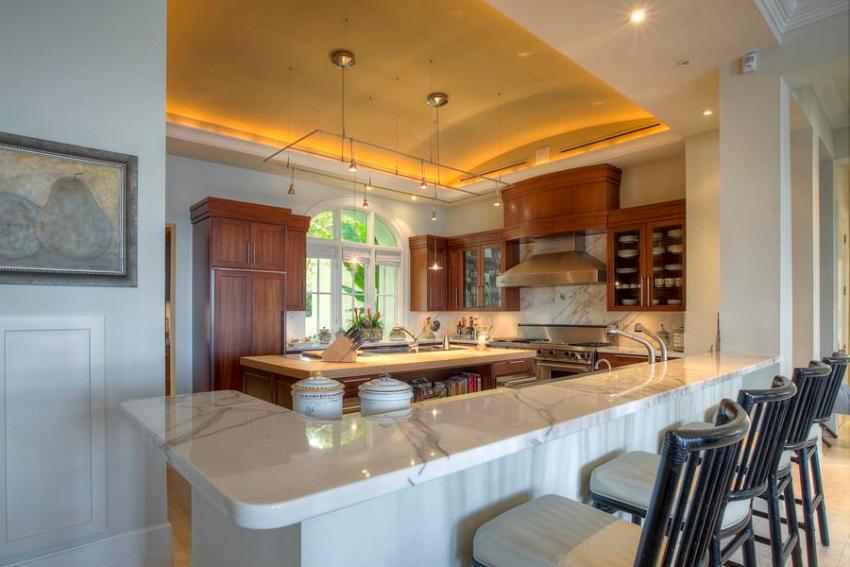
Arched ceiling structure is complemented led strip as a backlight
Which ceiling is better in the kitchen: photo versions of different styles
There is no doubt that the ceiling covering should last as long as possible. Considering that there is a temperature drop, humidity in the kitchen room, and condensation occurs when cooking in a long-term mode, the coating must combine moisture-resistant and fire-safe qualities. When thinking about repairing the ceiling in the kitchen, one should also take into account its compliance with the intended style. And what housewife does not dream of a kitchen shining with cleanliness? Therefore, the priority is given to materials for the ceiling surface, which are easy and quick to maintain.
When deciding which ceilings for the kitchen are best, you should adhere to the following:
- the coating must be resistant to moisture;
- the structure should not deform under the influence of temperature;
- the coating is selected from fireproof materials;
- the structure should be easily and quickly cleaned.
The design of ceilings in the kitchen (the photos of many of them are unique) can be varied and support the main interior of your home.
Traditional methods of finishing the ceiling
When choosing a coating option, many people prefer a smooth plaster ceiling. In this case, there is no doubt about the environmental friendliness of the coating.However, you should be patient, as it will take a lot of work to achieve a perfectly flat and smooth surface. It will be necessary to carefully clean and level the base surface, sometimes using plaster mesh for reinforcement.
If there is a joint between the slabs on the ceiling, it must be thoroughly cleaned and carefully repaired. The next step will be - leveling the ceiling with putty. It is recommended to use before processing with putty glass canvas, which eliminates the appearance of cracks and contributes to the elasticity of the applied layer. Once the surface of the base is perfectly smooth, you can apply whitewash or paint.
When painting, water-based and water-dispersion paint is used. Such paint is easily applied, it is harmless and practically odorless. After painting, the surface can be washed with the use of detergents. To prevent stains from appearing during operation, the surface should be primed before painting, using alkyd paint with a matte effect as a primer.
It must be remembered that each layer of the applied coating must dry well before applying a new one. The film, which forms as a result of drying of the paint, allows the surface to "breathe", but at the same time has high thermal properties.
A ceiling using staining is a very budget option. Such a coating can be given any color accent, and if necessary, renew or change the tone of the coating. It fits perfectly into the design of any direction, is resistant to temperature and steam, lasts a long time and is easy to clean.
A selection of photographs of kitchen ceilings in various magazines will showcase classic surface finishes.
Familiar wallpaper and foam tiles for the ceiling
Another inexpensive way to decorate the ceiling in the kitchen is to wallpaper it. In this case, you can significantly speed up the repair process and avoid the appearance of small cracks formed during shrinkage, which are successfully hidden under the wallpaper. Will be acceptable washable coated wallpaper and moisture resistant properties. They will hide all the defects of the ceiling and provide a visual solidity of the coating.
Wallpaper for painting, which can easily withstand repeated application of layers of staining, will be a good purchase for a kitchen ceiling. Such wallpaper can be given a suitable color or pattern that makes the ceiling for the kitchen as a whole harmonious.
A relatively cheap and easy option is to cover the ceiling with expanded polystyrene tiles. This material is quite elastic, under it you can easily mask irregularities, and the device of such a ceiling in the kitchen with your own hands does not require special skills. Laying such slabs does not require a frame arrangement.
The base of the ceiling is treated with degreasing agents and the tiles are glued to the clean base. The ceiling made of PVC tiles is easy to clean with a sponge dipped in a detergent composition. Among the shortcomings, one can single out the old-fashioned coating and its unsuitability for use in modern design styles, such as modern, avant-garde, hi-tech.
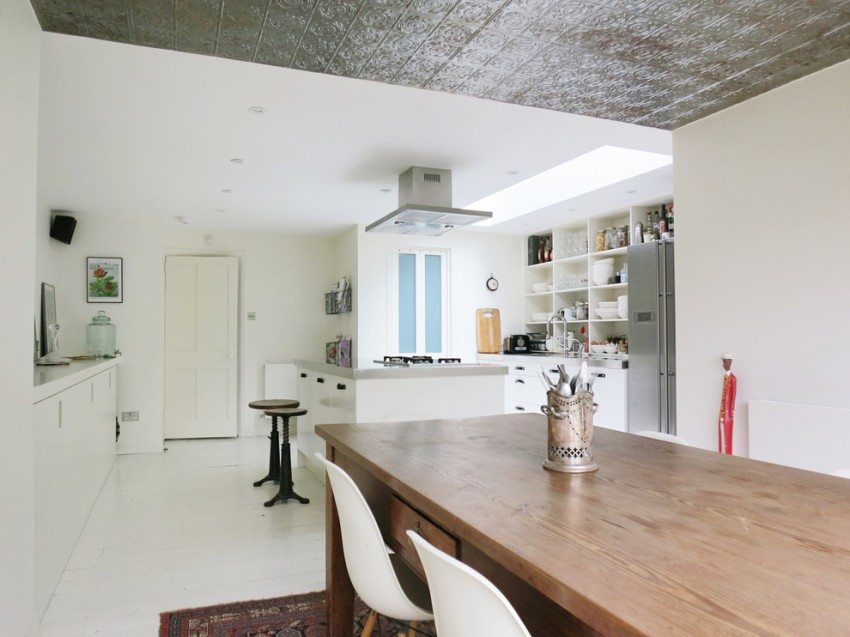
The ceiling in the kitchen is covered with polystyrene foam tiles with laminated surface
What are the best ceilings in the kitchen? Photos of successful projects will help you choose the right type of coating.
Plastic ceiling in the kitchen
The design of the pvc ceiling in the kitchen is a suspended ceiling system made of a profile metal frame, into which plastic panels are mounted. For the device of such a ceiling, a crate made of wooden beams is also suitable. The ceilings in the kitchen made of plastic panels (the photo confirms this) look expressive, and copes well with the typical effects of kitchen conditions. Of the advantages of such structures, one can single out the fact that they are easy to clean, resistant to moisture, and have low weight.
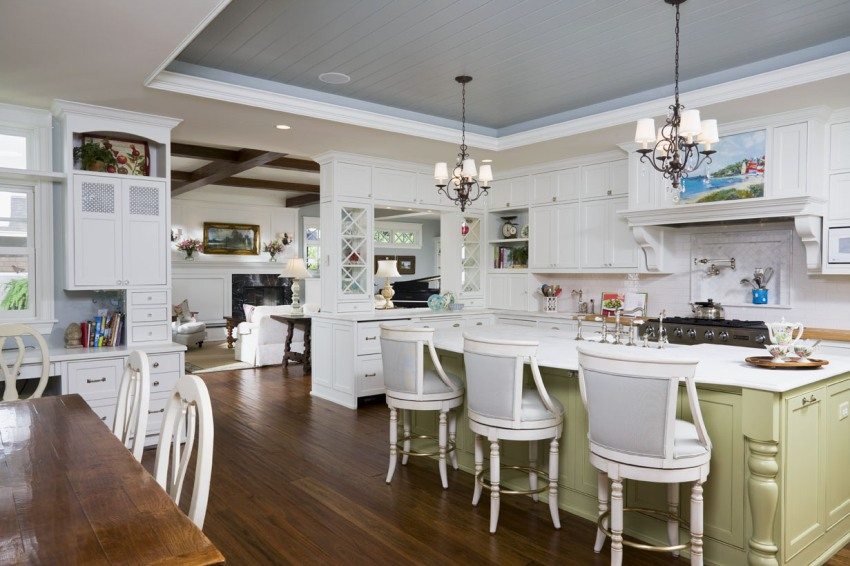
Two-tier suspended ceiling in kitchen-living room using plastic panels
The ceiling made of plastic will allow you to hide the existing imperfections of the base, without resorting to preliminary scrupulous processing and cleaning of the base. In addition, the existing hollow space between the plastic cover and the base improves sound-absorbing performance, allows you to hide ventilation pipes and built-in lighting wires in it. Such a coating during long-term operation does not deform and does not fade under the influence of sunlight.
Helpful advice! To find out the quality of the plastic you are purchasing, try squeezing it with your fingers at the edge of the end cut. If dents and cracks appear, this plastic does not have high properties. High-quality plastic is able to quickly restore volume after compression.
If you have the necessary building tools, do it yourself ceilings from plastic panels in the kitchen are assembled very easily. If all the installation recommendations are followed, the coating turns out to be even, smooth and supports the chosen style very well.
Among the disadvantages of such a coating, one can single out the fact that with incorrect installation, dents remain on the plastic, such structures do not retain water in the event of accidental flooding, and the height of the room is somewhat reduced due to the structure of the frame. Although, if you use a glossy seamless material, it will visually expand the volume.
Plastic ceilings in the kitchen (photos of such systems are on the Internet) can be of various colors and finishes. The assortment of plastic panels imitating various textures (marble, wood, etc.) is presented in a fairly wide range. Which ceilings in the kitchen are better: customer reviews will help in choosing a coating.
Related article:
Stretch ceiling in the kitchen. Design. Photo solutions. Advantages and disadvantages of a stretch ceiling. Finding the right solution for your kitchen. Subtleties of installation, operation and maintenance.
The design of the rack ceiling in the kitchen
One of the options for suspended systems is a slatted ceiling. Such a structure is assembled by attaching a plurality of rails to the metal frame. They are usually made of varnished aluminum. Less common slats made of wood. Thin stripes of various colors on the ceiling create the illusion of height, enhanced by spot lighting. The ceiling, assembled from mirror slats, looks extravagant. Due to their plasticity, such structures can be flat and curved. If desired, you can create unique designs.
Among the advantages of rack systems are the following:
- the ability to completely mask irregularities and defects in the base;
- moisture resistance and water resistance;
- perfect for the device of multi-level structures;
- the ability to build in backlight;
- practical and durable;
- made from environmentally friendly material;
- easy to care for.
Like any suspended or hemmed structure, the slatted ceiling takes up a little room height and, judging by the reviews, does not look like home. These are, perhaps, all his shortcomings.
What is the best kitchen ceiling design? Photos, presented on design sites, will allow you to study design proposals in detail.
Plasterboard for the ceiling in the kitchen
Plasterboard structures have long become a common option for ceilings. The qualitative characteristics of gypsum plasterboards allow them to be used in any premises, including for finishing the ceiling of the living room, kitchen. Usually, moisture-resistant drywall is used for kitchens. Ceilings in one level are quickly and easily mounted, and multi-level systems, although they require the involvement of specialists, allow you to create the effect of zoning a room, dividing it into several zones.
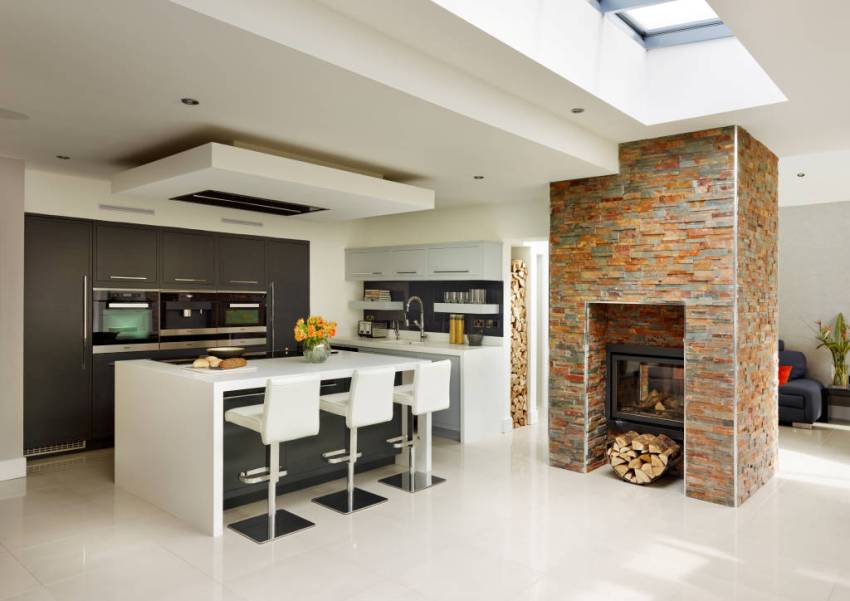
Multi-level plasterboard suspended structure on the kitchen ceiling
Helpful advice! When planning to arrange plasterboard ceilings in the kitchen in several levels, remember that the rectangular shape of the structure will somewhat lengthen the shape of the kitchen, round is used to emphasize the center of the ceiling, under the square is usually the dining area.
When installing a multi-level ceiling, you need to pay attention to lighting. Such designs allow you to place several lighting modes, including the main source - a chandelier in the center of the ceiling and spotlights built around the perimeter.
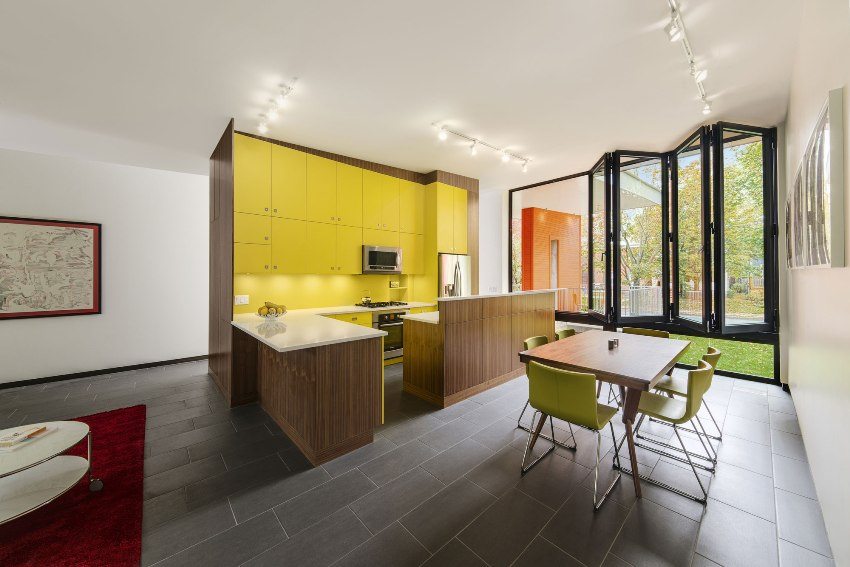
Under the ceiling of the sheets of plasterboard, you can hide electrical wiring and ventilation pipes
In apartments with low ceilings, one-level plasterboard systems should be chosen so as not to reduce the already small height of the room. Plasterboard structures have all the advantages of suspension systems: they are moisture resistant, durable, and LED strips and lamps can be easily mounted in their structure.
The disadvantages include the fact that after the plasterboard ceiling system is formed, finishing is required false ceiling... It includes the reinforcement of joints with a serpentine for seams, putty, surface priming and direct application of the finishing material. It could be decorative plaster, painting or wallpapering.
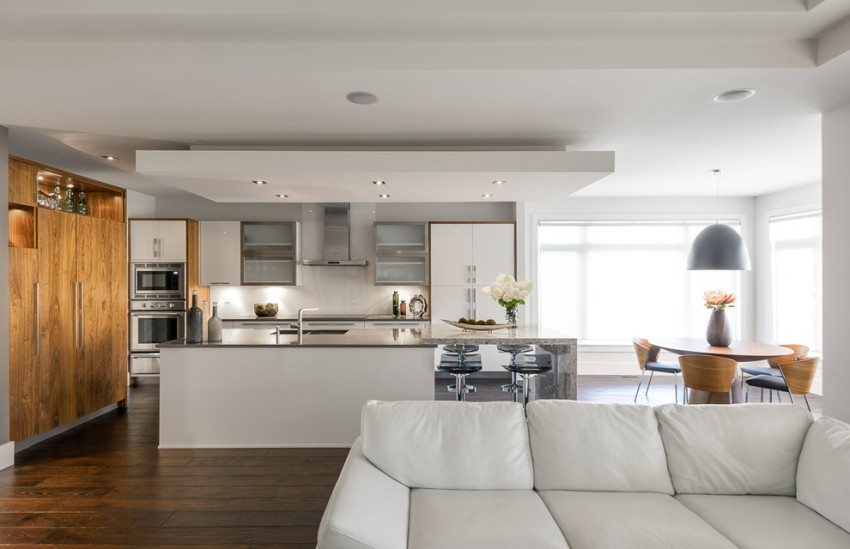
Space zoning kitchen-living room using a tiered ceiling
View selection photo of plasterboard ceilings in the kitchen on our website.
Stretch ceilings in the kitchen: seamless design photo
Increasingly, designers are proposing to use stretch coatings as an alternative to the usual finishing materials for the ceiling. They have a number of qualities and advantages, like other suspended structures:
- there is no need for careful preparation of the existing framework;
- quick and easy installation;
- the ability to hide all communications behind the cover and build in spotlights;
- perfectly flat smooth surface, impeccable appearance;
- ease of care;
- impressive service life.
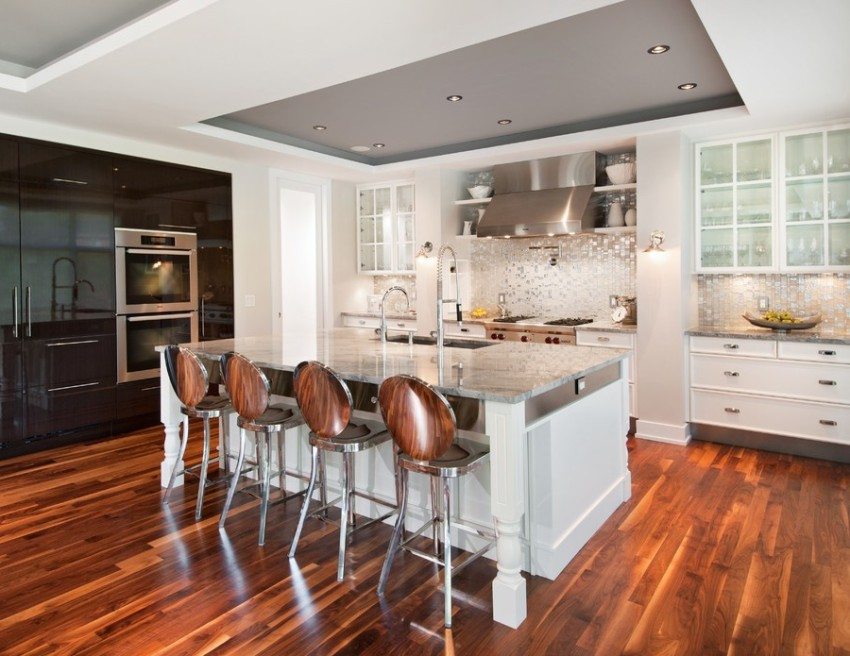
Two-level stretch ceiling with spot lighting
The material for the manufacture of stretch coatings is durable polyvinyl chloride or seamless fabric coated with a polyurethane compound. The fabric of the tension structure is moisture resistant, reliable, and flexible. It does not transmit and does not attract dust particles, is not afraid of fat drops, condensation does not form on it, and has the ability to withstand a large volume of water in case of flooding.
In order to improve the soundproofing properties of the ceiling, it is recommended to additionally sheathe the main ceiling with soundproofing material, for example, mineral wool.
You can ask about the advantages and properties of a stretch ceiling in the kitchen, reviews are available on relevant sites.
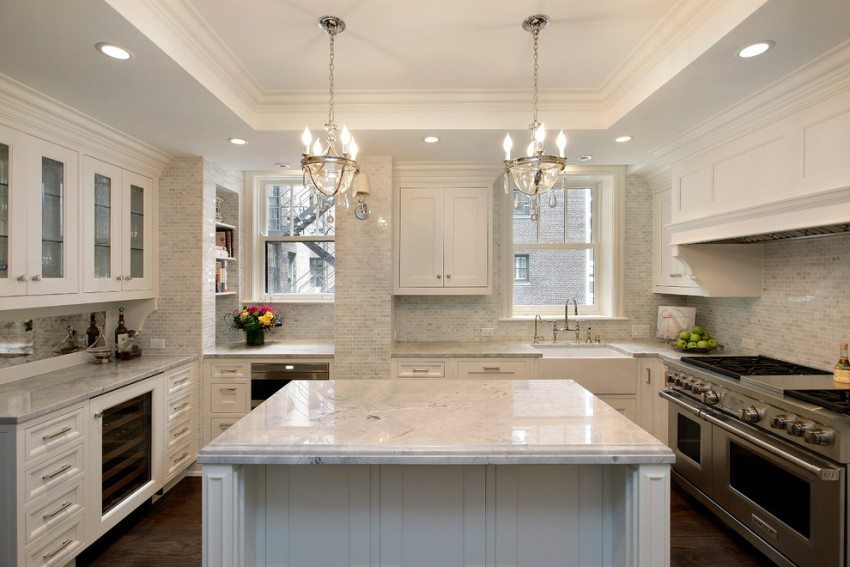
Ceiling structure made of plasterboard and matt PVC films on the kitchen
Among the basic textures of stretch ceilings offered by manufacturers, the following are distinguished:
- satin with antibacterial coating;
- lacquered;
- perforated lacquered;
- metallic;
- nacre;
- marble;
- tree;
- suede leather;
- leather.
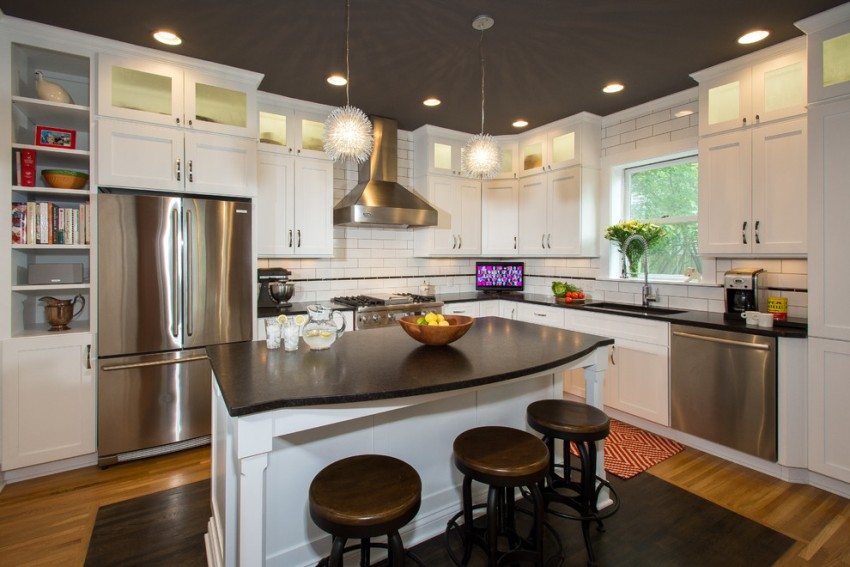
The kitchen is decorated with black satin stretch ceiling
Each sample of textured canvas has a unique set of colors. Such a variety of coatings makes it possible to embody any design solution by fitting the ceiling structure into the required style: from classic to modern.
Helpful advice! When installing a stretch ceiling, pay attention to the smell of the product, it should not be very harsh. If such a situation arises, it is necessary to require replacement of the tensioning web.
The main disadvantages of tensioning canvases include a decrease in height, vulnerability to sharp objects, attracting professionals for installation and the inability to change the place of built-in lamps, since the holes for them are cut out at the stage of installation of the coating.
Having familiarized yourself with the proposed options for finishing the ceiling, you can determine which stretch ceiling for the kitchen would be better combined with the overall design of your home.
